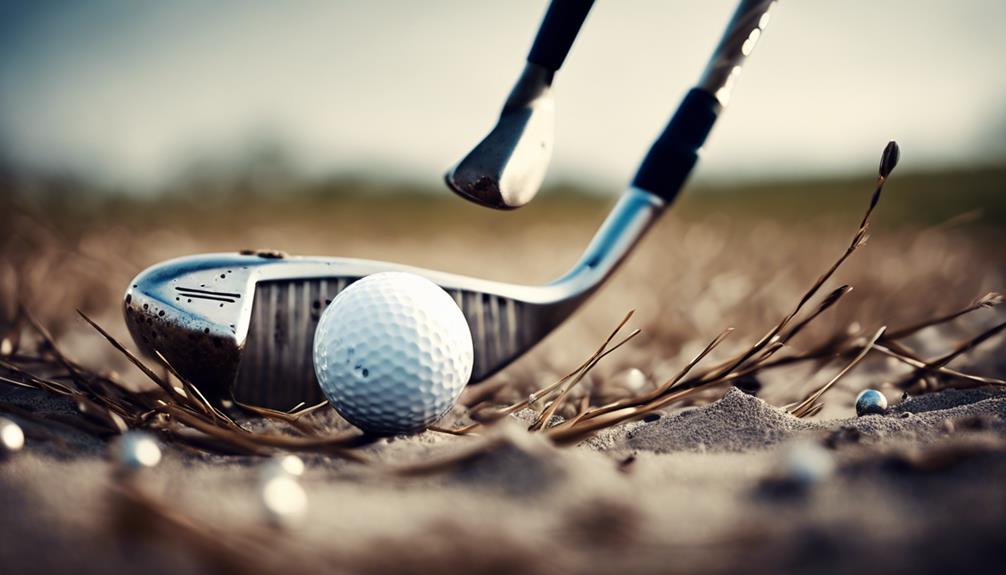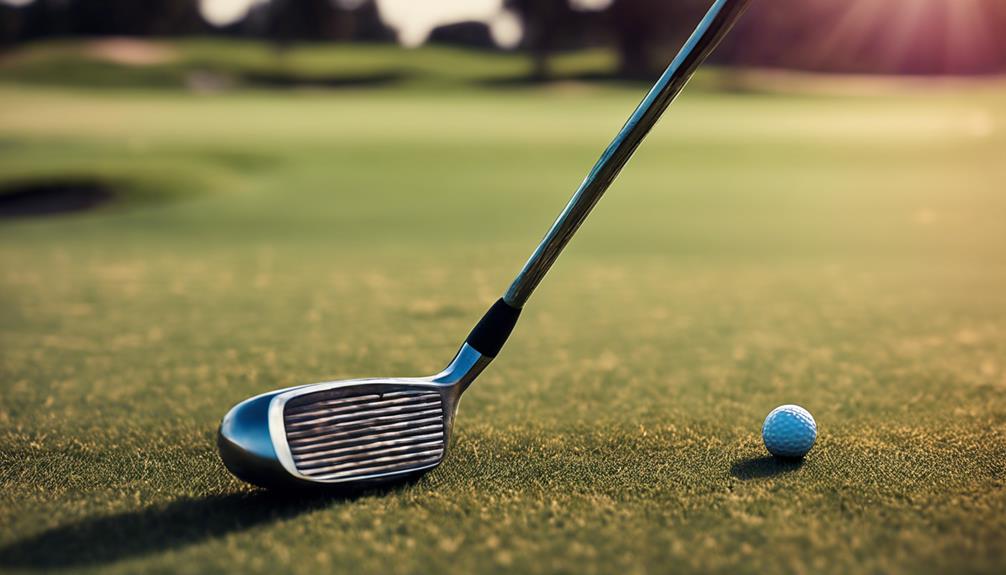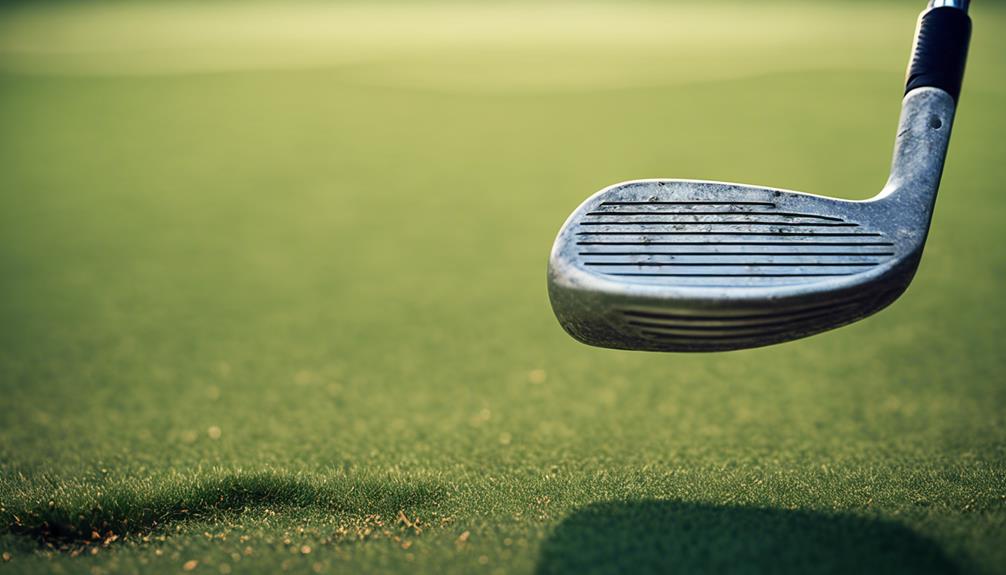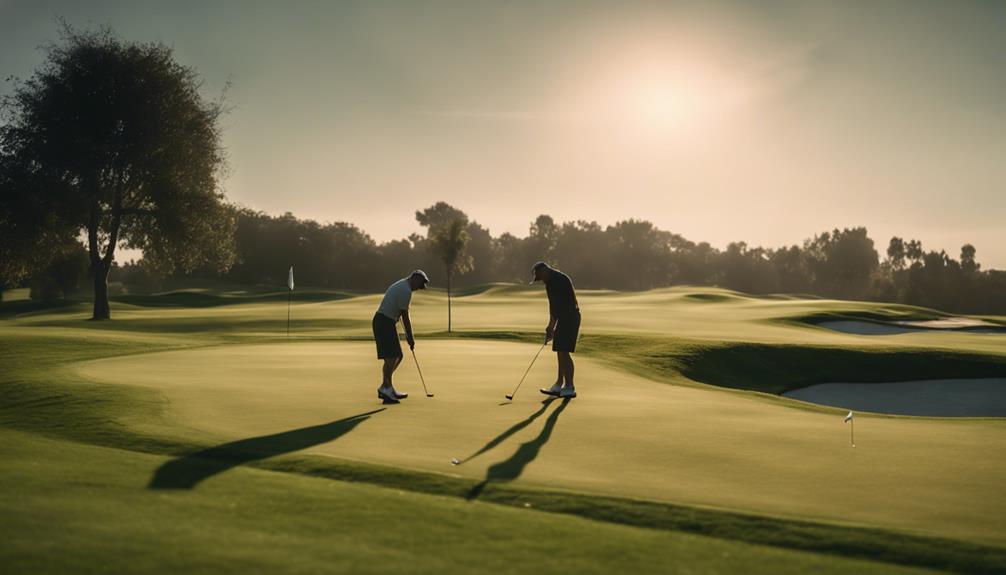- 7 Top Flite Golf Clubs XL for Improved Performance - September 28, 2024
- Top Flite Golf Clubs: Top 5 Reasons to Choose Them - September 28, 2024
- Top 3 Golf Club Fitters for a Perfect Swing - September 28, 2024
You own golf clubs that, like any other piece of equipment, have a limited lifespan determined by factors including their quality, frequency of use, and maintenance. The average lifespan of modern golf clubs ranges from three years to a lifetime with repairs, although wear and tear are inevitable. Regular cleaning, storage, and inspection can help prevent damage and extend their lifespan. As you continue to use your clubs, keep an eye out for signs of wear and tear, and take steps to maintain their performance – there's more to learn about getting the most out of your clubs.
Key Takeaways
- Yes, golf clubs do get old, and their lifespan is affected by quality of construction, frequency of play, and maintenance.
- The average lifespan of modern golf clubs ranges from three years to a lifetime with repairs, depending on usage and care.
- Regular cleaning, storage, and inspection can help prevent damage and extend the lifespan of golf clubs by 1-2 years.
- Signs of wear and tear, such as scuffs, scratches, and loss of shine, indicate the onset of deterioration and decline in performance.
- Proper care and maintenance, including regripping and shaft inspection, can help maximize club performance and extend their lifespan.
Factors Affecting Club Longevity
As you wield your golf clubs, several factors simultaneously converge to affect their longevity, from the quality of construction and materials used to the frequency and intensity of play.
The lifespan of golf clubs is directly impacted by these variables, which can either prolong or shorten their service life.
Wear and tear are inevitable, but you can mitigate their effects through proper care and maintenance.
The quality of construction is a vital factor, as clubs built with durable materials and craftsmanship can withstand the rigors of regular play.
However, even the best-made clubs will eventually succumb to wear and tear if not properly maintained.
Regular cleaning, storage, and inspection can help prevent damage and extend the lifespan of your golf clubs.
Additionally, your playing style and frequency of play also play a significant role in determining the longevity of your clubs.
Average Lifespan of Golf Clubs
As you consider replacing your golf clubs, you're likely wondering how long they'll last.
The rate at which your club materials degrade, how often you use them, and advancements in technology all impact their lifespan.
Understanding these factors will help you determine when it's time to upgrade your clubs and optimize your game.
Club Material Degradation Rate
You can expect the average lifespan of your modern golf clubs to range from three years to a lifetime with repairs, depending on factors such as your frequency of play and how well you care for them.
The club material degradation rate is a key factor in determining the expiration date of your golf clubs.
Club materials have improved over time, increasing their lifespan, with titanium, for example, having a half-life of approximately 60 years, guaranteeing clubs remain intact.
The lifespan of different clubs varies, with wedges and drivers typically wearing out faster than other clubs, while long irons and putters can last for many years with minimal use.
Regular cleaning and maintenance can extend the lifespan of golf clubs, with proper care allowing clubs to last longer and perform better.
The construction of metal heads and shafts is tested for high cycle fatigue to confirm durability, making golf clubs unlikely to deteriorate before the golfer's skills do.
The golf shaft, in particular, is designed to withstand the stresses of the game, and its material degradation rate is a demonstration of its durability.
Usage Frequency Impact
Your golf clubs' lifespan is directly tied to how frequently you use them, with regular play substantially reducing their average lifespan.
The more rounds of golf you play, the faster your clubs will deteriorate. If you're an avid golfer who hits the links 3-4 times a week, you can expect to replace your clubs every 2-3 years. On the other hand, if you only play occasionally, you may get 5-7 years out of your clubs.
According to a survey, 43% of golfers change their clubs after 4 years, with 31% changing them every 4 years and 17% changing them every 3 years.
Proper care and maintenance, such as cleaning and storing clubs properly, can extend the lifespan of golf clubs by 1-2 years. However, even with proper care, frequent play will still reduce the lifespan of your clubs.
You need to monitor your clubs' condition and replace them when necessary to maintain peak performance. By understanding the impact of frequency of play on your clubs' lifespan, you can plan ahead and make informed decisions about when to upgrade your gear.
Technology Advancement Effects
Advancements in golf club technology have substantially extended the average lifespan of golf clubs, now ranging from 3 to 10 years, depending on frequency of play and quality of care. This means you can enjoy your golf equipment for a longer period without needing to replace them.
Club materials have improved over time, increasing their lifespan, with advances in technology leading to stronger and more resilient shafts, heads, and grips.
The 5-year rule isn't strict for drivers, and new technology doesn't always mean huge gains in distance and accuracy, making it unnecessary to buy a new driver every year.
Iron technology advances noticeably every 5 years, especially in game improvement categories, making it a good window to see substantial changes in iron performance and forgiveness.
Modern golf clubs can last a lifetime with proper repairs, but wedges and drivers tend to wear out faster than other clubs, while long irons and putters can last for many years with minimal use.
With these advancements, you can focus on improving your game without worrying about your clubs becoming outdated. When you do decide to upgrade, you can expect new clubs to provide marked improvements in performance and durability.
Signs of Wear and Tear

As you examine your golf clubs, you'll want to look for signs of wear and tear that can affect their performance.
You'll need to inspect the club face for deterioration, such as cracks or scratches, which can impact your shot accuracy.
You should also check the shaft for flex degradation, as bent or flexed shafts can throw off your game.
Club Face Deterioration
Scuffs and scratches on the club face, particularly around the sweet spot, indicate the onset of deterioration, revealing the first signs of wear and tear. As you continue to use your golf clubs, the club face will naturally degrade, affecting your game. To last longer, you need to maintain your clubs properly.
Loss of shine: A dull club face can indicate excessive wear, leading to a loss of impact and distance.
Rust or corrosion: If you notice rust or corrosion on the club face, it's a sign of neglect and can lead to further damage.
Groove wear: Worn-out grooves on the club face can affect the ball's spin and trajectory.
Impact marks: Deep impact marks can weaken the club face, causing it to lose its structural integrity.
Shaft Flex Degradation
You may not notice it immediately, but your golf shafts are slowly losing their flexibility, a critical component of peak performance that can cost you distance and accuracy.
Shaft flex degradation is a common issue, particularly in drivers and fairway woods, where high torque and stress take their toll.
Over time, the shaft's flex can weaken, leading to a loss of distance and accuracy – some golfers experience a decrease of up to 20-30 yards in driving distance.
Signs of shaft flex degradation include a noticeable decrease in ball speed, a higher trajectory, and a more penetrating ball flight, as well as a possible increase in spin rate.
The rate of shaft flex degradation depends on various factors, including the quality of the shaft, your swing speed and tempo, and the frequency of play.
If you've been playing with the same shafts for a number of years, it's likely that you're experiencing some degree of degradation.
Regular inspection and testing of shafts can help identify signs of degradation, allowing you to replace or upgrade your shafts to maintain top-notch performance.
Performance Decline Indicators
Your golf game is sending you signals that your clubs are no longer performing at their best, and you must pay attention to these indicators to maintain your edge on the course. If you're noticing a decline in your overall game, it may be time to reassess getting a new set of golf clubs.
A loss of distance, accuracy, or consistency in shots, even with regular practice and proper maintenance, can be a signal that it's time to think about upgrading. Visible signs of wear and tear, such as cracks, dents, or worn-out grooves on club faces, are another indication. A significant increase in spin rate or launch angle with drivers or irons, resulting in shorter distances and less accuracy, can also be a sign of declining club performance. Additionally, a noticeable change in feel or feedback during swings, such as a less responsive or less consistent feel, may mean it's time to explore new options.
If you're experiencing any of these issues, it may be time to weigh the benefits of upgrading to a new set of golf clubs. While golf clubs can last for several years, their performance will eventually decline. Investing in a new set can help you regain your edge and take your game to the next level.
Extending Club Lifespan Tips

Proper care and maintenance can substantially extend the lifespan of your golf clubs, and by following a few simple tips, you can keep your clubs in top condition for years to come.
One key habit to develop is cleaning your clubs after each shot or round using a wet and dry towel. This removes dirt, sand, and debris that can quicken depreciation, allowing your clubs to last longer.
Additionally, use a metallic brush to clean iron grooves and a plastic brush to clean metal clubs, as this helps maintain their performance and prevents wear and tear.
You should also consider changing club grips every year or as needed, as worn-out grips can affect club performance and feel.
Furthermore, store your clubs properly in a cool, dry place, away from extreme temperatures and humidity, to prevent damage and unnecessary wear.
How to Inspect Your Clubs
Before hitting the course, take a few minutes to thoroughly inspect your golf clubs, examining every detail to guarantee they're in prime condition to deliver peak performance. You want to verify that every club is in top shape to help you achieve the best results.
Examine the clubheads for signs of wear, such as scratches, dents, or corrosion, which can affect the club's performance and accuracy.
Check the shafts for any signs of bending, warping, or rust, as well as for loose or damaged ferrules, which can impact the club's flexibility and stability.
Inspect the grips for wear, paying attention to smooth or shiny areas, fraying, or loss of texture, as worn-out grips can cause inconsistent swings and poor performance.
Look for any signs of damage or wear on the club's ferrules, hosels, and adapters, as these can affect the club's overall stability and performance.
Club Replacement Frequency

Golf clubs don't last forever, and understanding the frequency of replacement is crucial to maintaining peak performance on the course.
You might be wondering how often you should replace your golf clubs. The answer varies depending on several factors, including your frequency of play and how well you care for your clubs.
On average, golf clubs can last anywhere from three years to a lifetime with repairs. However, some clubs wear out faster than others.
Wedges, for instance, should be replaced every 2 years to maintain clean and sharp clubfaces.
Long irons and putters, on the other hand, can last for many years with minimal use, with putters having the longest lifespan due to minimal wear and tear.
Notably, 43% of golfers replace their clubs every 4 years, suggesting that many golfers upgrade to new ones to take advantage of new technology and maintain performance.
If you're considering getting new golf clubs, you must assess your current set's condition and performance to determine if the time has come for an upgrade.
Impact of Technology Advancements
As you consider replacing your golf clubs, you're likely wondering how advancements in technology have influenced the lifespan of modern clubs, and whether these innovations warrant more frequent upgrades.
The truth is, advances in technology have substantially impacted the durability of new golf clubs.
Modern clubs are designed with improved materials and designs, making them more resilient and longer-lasting. High-quality materials used in club construction play a vital role in determining their lifespan. Proper care and maintenance, such as regular cleaning and regripping, can extend the life of your clubs and prevent wear and tear.
New technology doesn't always mean huge gains in distance and accuracy, making it unnecessary to replace clubs every year.
In reality, modern golf clubs can last anywhere from three years to a lifetime with repairs, depending on frequency of play and care. The quality of club materials profoundly impacts durability, and proper care can extend club lifespan.
With these factors in mind, it's clear that advances in technology have increased club lifespan, making it possible to enjoy your new golf clubs for a longer period.
Maximizing Your Club's Potential

To tap into your golf clubs' full potential, you'll need to understand how to properly adjust and fine-tune them to suit your unique swing style and playing preferences.
This means getting familiar with the nuances of your set of golf clubs, from the loft and lie of your irons to the flex and torque of your shafts.
By making subtle tweaks to these variables, you can optimize your clubs' performance and tap into improved distance, accuracy, and control.
Don't fall into the trap of buying new equipment every time you hit a slump – instead, invest time in learning how to get the most out of your current clubs.
With practice and patience, you can coax impressive results from even the most seasoned sticks.
Remember, it's not about the clubs themselves, but how you work with them.
Frequently Asked Questions
How Often Should Golf Clubs Be Replaced?
You should replace your golf clubs every 3-4 years to stay current with advancing club technology, consider seasonal upgrades to optimize performance, and reassess your set as your game evolves through player progression.
How Do I Know if My Golf Clubs Are Still Good?
Imagine your favorite club, once a trusted companion, now faltering with every swing. To determine if your clubs are still good, you should conduct a thorough club inspection, examining grip condition and noting any deterioration in your golf swing performance.
How Do You Bring Old Golf Clubs Back to Life?
You revitalize old golf clubs by exploring refurbish options, such as regrooving and grip replacement, and applying restoration methods like cleaning and polishing, while considering customization ideas like shaft upgrades to regain peak performance.
How Long Do Golf Irons Last?
You can expect your golf irons to last around 10 years or 300 rounds with proper care, but iron forgiveness decreases over time, and clubhead rust and reduced shaft flexibility will impact performance if not regularly inspected and maintained.
Conclusion
As you reflect on your golf clubs' performance, remember that their lifespan is a delicate balance of maintenance, usage, and technological advancements.
The truth is, golf clubs do get old, but it's not just about the number of years they've been in your bag.
It's about the cumulative effects of wear and tear, and how you've cared for them.
By understanding the factors that impact club longevity, you can maximize their potential and make informed decisions about when to replace them.




